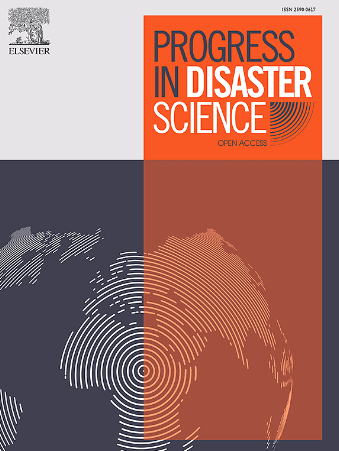Dual-constrained healthcare emergency facility location model under flood scenarios: A case study in the Maozhou River basin, Shenzhen, China
IF 3.8
Q3 ENVIRONMENTAL SCIENCES
引用次数: 0
Abstract
Extreme rainfall-induced flooding significantly impacts healthcare emergency services. Current research on optimizing the deployment of healthcare emergency facilities under flooding scenarios remains limited, particularly in terms of considering both the population coverage and spatial coverage. Based on the simulation of urban flooding, this study proposes a dual-constrained emergency facility location optimization model that balances both the newly added service population and newly service scope, and its effectiveness is validated in the Maozhou River Basin in Shenzhen. The results indicate that urban flooding in the study area is caused by insufficient drainage capacity and low-lying topography, with the former being the dominant contributing factor. Additionally, rainfall events exceeding a 78 mm/h(10-year threshold) alter the shortest access routes to healthcare emergency services for over 50 % of the population.Compared with the decrease in traffic speed, impassable roads due to flooding exert a greater effect on healthcare emergency services. Lastly, optimization outcomes under three flooding scenarios demonstrate the applicability of our model, accurately determining the location of high priority healthcare emergency facilities. Non-inundated populations now achieve assured 15-min healthcare emergency response. This study provides a scientific foundation for urban emergency departments to plan resource allocation, reducing risks from healthcare delays in non-inundated areas.
洪水情景下的双约束医疗急救设施选址模型——以深圳茅州河流域为例
极端降雨引发的洪水严重影响医疗急救服务。目前关于优化洪水情景下医疗应急设施部署的研究仍然有限,特别是在考虑人口覆盖率和空间覆盖率方面。在城市洪涝模拟的基础上,提出了一种兼顾新增服务人群和新增服务范围的双约束应急设施选址优化模型,并在深圳茂洲河流域进行了有效性验证。结果表明:研究区城市洪涝是由排水能力不足和地势低洼造成的,其中排水能力不足是主要的影响因素;此外,超过78毫米/小时(10年阈值)的降雨事件改变了50%以上人口获得医疗急救服务的最短途径。与交通速度下降相比,水浸导致道路不通对医疗急救服务的影响更大。最后,在三种洪水情景下的优化结果证明了我们模型的适用性,准确地确定了高优先级医疗急救设施的位置。未被淹没的人口现在可以保证15分钟的医疗应急响应。该研究为城市急诊科规划资源配置提供了科学依据,降低了非淹没地区医疗延误的风险。
本文章由计算机程序翻译,如有差异,请以英文原文为准。
求助全文
约1分钟内获得全文
求助全文
来源期刊

Progress in Disaster Science
Social Sciences-Safety Research
CiteScore
14.60
自引率
3.20%
发文量
51
审稿时长
12 weeks
期刊介绍:
Progress in Disaster Science is a Gold Open Access journal focusing on integrating research and policy in disaster research, and publishes original research papers and invited viewpoint articles on disaster risk reduction; response; emergency management and recovery.
A key part of the Journal's Publication output will see key experts invited to assess and comment on the current trends in disaster research, as well as highlight key papers.
 求助内容:
求助内容: 应助结果提醒方式:
应助结果提醒方式:


